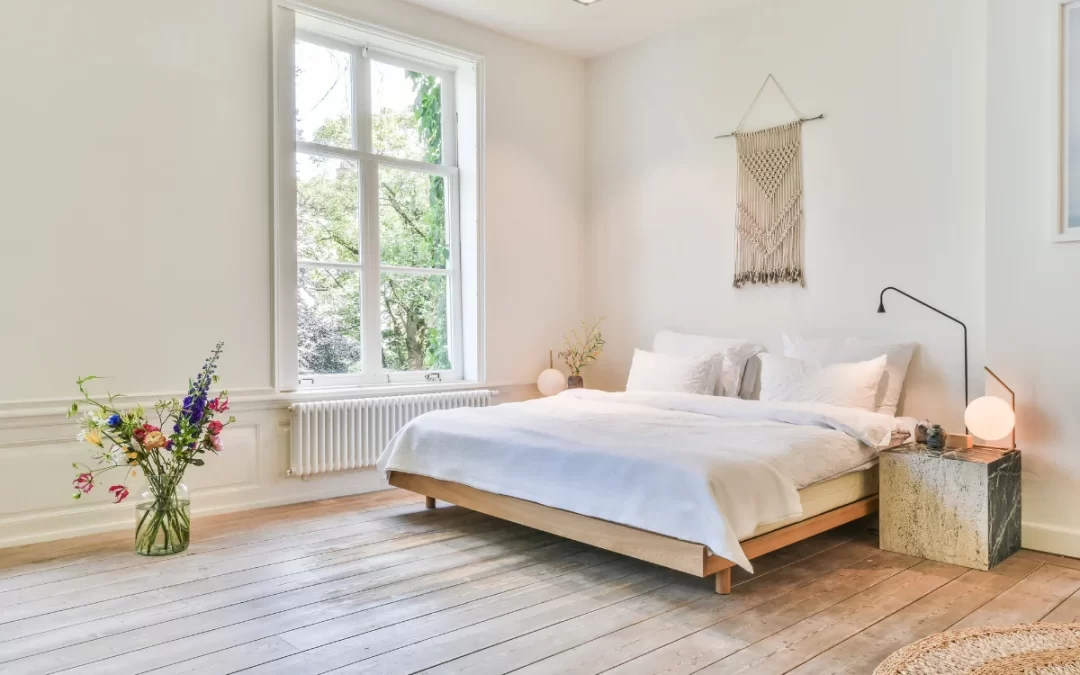Bringing in additional natural light into your home can make your space feel more inviting, relaxing, and rejuvenating. With more light, you’ll notice colors in your home pop, and your décor will be more appealing. This element is especially important in small spaces, as natural light will make a room look bigger.
In addition, there is no better way to reduce your reliance on artificial lighting than by maximizing natural light. You’ll reduce your energy costs while creating a warm and lighter atmosphere in your home. Check out these ten ways to maximize natural light in your home.
1. Install Larger Windows
One of the best ways to bring more natural light into your home is by installing large windows. With large windows, you’ll likely access more natural light throughout the day. This is one sure way to enjoy the benefits of natural light in your home.
Consider installing picture windows, as they allow you to make the most of the beautiful light coming from outside. As a bonus, if your home overlooks a scenic feature, you’ll benefit from an obstructed view. Large windows are a great way to update your home as they combine functionality and form through lighting and energy efficiency.
2. Bring Down Some Internal Walls
Another way to maximize natural light in your home is by removing certain walls. For example, take down the wall separating the dining room and the kitchen to have an open-plan dining-kitchen area. Without walls between rooms, natural light will easily flow from one room to another.
Plus, if your kitchen had one window and your dining room had another, you now have one space with two windows, bringing in more light. Since walls support the structure of a home, it’s best to work with a certified architect when taking this path. You don’t want to make a mistake that can put your home’s structure at risk.
3. Install Dormers and Skylights on Your Roof
Skylights are an effective way of maximizing natural light in your home. They can be installed on different types of roofs and allow a significant amount of light to flood into your home at all times of the day. If you have found an opportunity to install this type of window, take it.
Dormers are another great alternative if you’re trying to bring more natural light into upstairs spaces. These structures can be constructed in different styles and sizes to suit your home’s design. They will look like part of the roof, making your home more appealing.
4. Paint Lighter Colors on the Walls
Lighter colors reflect more light, making a home appear brighter. If you have painted your home with dark colors, consider a switch. There are some great colors that will help brighten the room, helping you maximize the light already flowing into the house. White is a great example and will reflect light on various areas of the house. If you find it too dull, consider light pastel hues.
5. Install Solar Tubes
Install a solar tube if you lack the space for a dormer or skylight. This is a cylindrical device that you install on the roof. It’s reflective, so it will capture natural light and bounce it inside the tube until it reaches your home, where the light is emitted through a dome.
The light spreads evenly, so you don’t have to worry about certain areas having too much sunlight than others. You also don’t have to worry about the risk of UV rays because of the bouncing nature of sunlight. You can install more than one solar tube based on the size of the space.
6. Add a Balcony, Patio, or Terrace
These are transitional spaces that open your home to the outside. Instead of having walls, create these spaces and add large doors. You will open the house to more natural light, and the area will feel bigger. For maximum light, go with doors that have slim framing. This is especially ideal for a modern house because it will blend in with your home style. Such doors allow maximum light without obstructing your view.
7. Install Reflective Features in Your Home
Reflective features work by reflecting light through your home. For instance, take a reflective chandelier. If the sun reflects on it, it will send more light to the room without even being on. Mirrors are also great for improving natural light in your home. Thanks to their reflective capabilities, they will increase the light flowing into the room. For maximum effect, install the mirror opposite a window and watch it double the light in the room.
8. Install Tall Ceilings
You can also maximize natural light in your home by installing tall ceilings. This is an excellent idea when remodeling the house because you can remove the roof and add the extension. They will add value to your home and give it an open and grand look. Combined with large windows, more natural light will flow into the room. Tall ceilings are more impressive in living rooms and dining areas.
9. Eliminate Objects Blocking Natural Light
Your landscaping can determine whether your home gets enough natural light or not. As much as trees and bushes add curb appeal, they block the light flowing into your home when they overgrow. Hire a landscaper to help you trim bushes or reduce branches on your tree. Sometimes, you may have to cut down a whole tree if it’s blocking sunlight from entering your home.
10. Reconsider Your Window Treatments
While curtains can improve your interiors, especially when blended with décor, they can also block sunlight. Heavy and dark curtains will limit the light your windows allow in the house. If you want privacy, why not use sheers that let in light while protecting you from prying eyes?
Bottom Line
These are the ten ways to maximize natural light. Note that if it involves altering the structure of your home, it’s wise to work with an architect. They’ll know how to incorporate these elements without compromising the structural integrity of your home.
If you would like to hear some additional ideas or a strategy specific to your home, contact us today.

